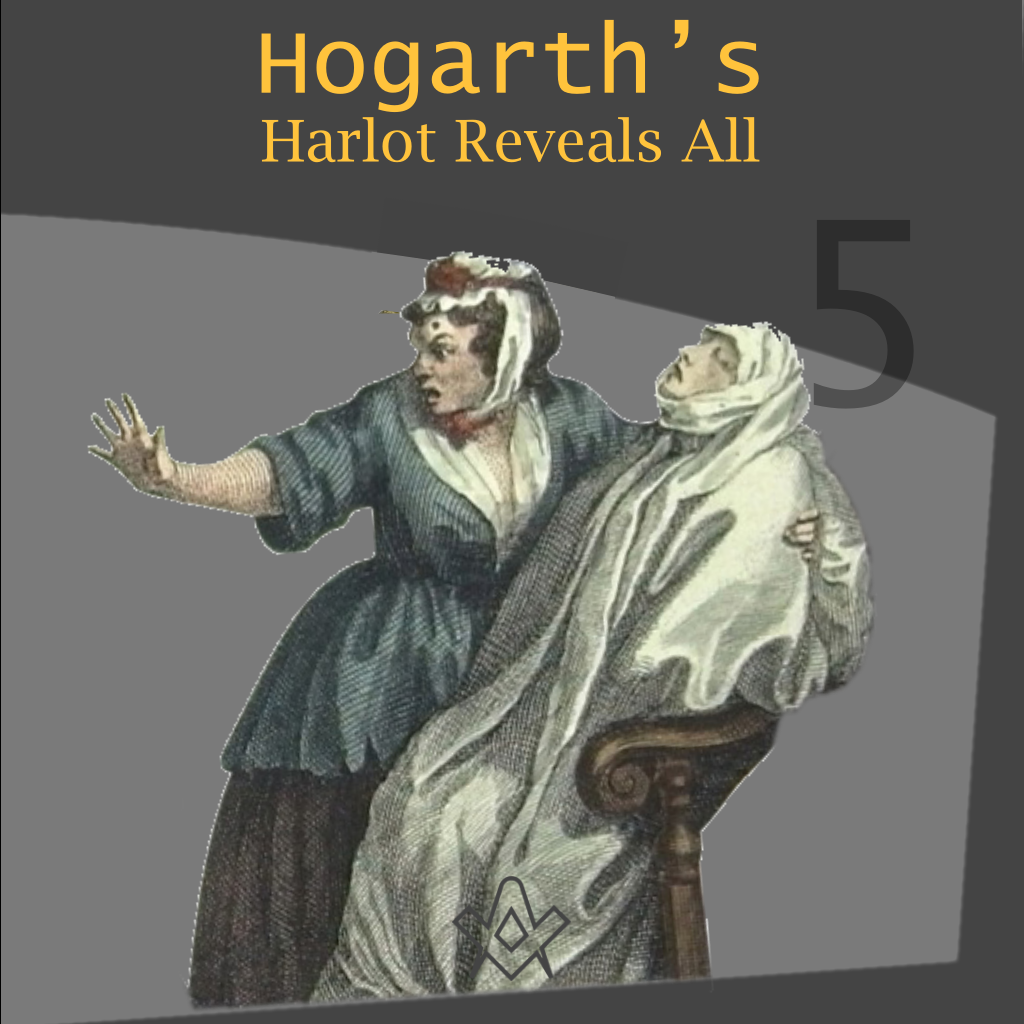In last month’s instalment, our Harlot is found in prison doing forced labour.
I am sorry to report that our Harlot will die in this scene.
On her arrival in London she was tricked into prostitution and after a brief spell as a high-priced courtesan, she was soon reduced to a lowly whorehouse.
She was arrested, and spent time doing hard labour. Now we see her in a slum, dying of syphilis. This was Hogarth’s warning to young women of the time.
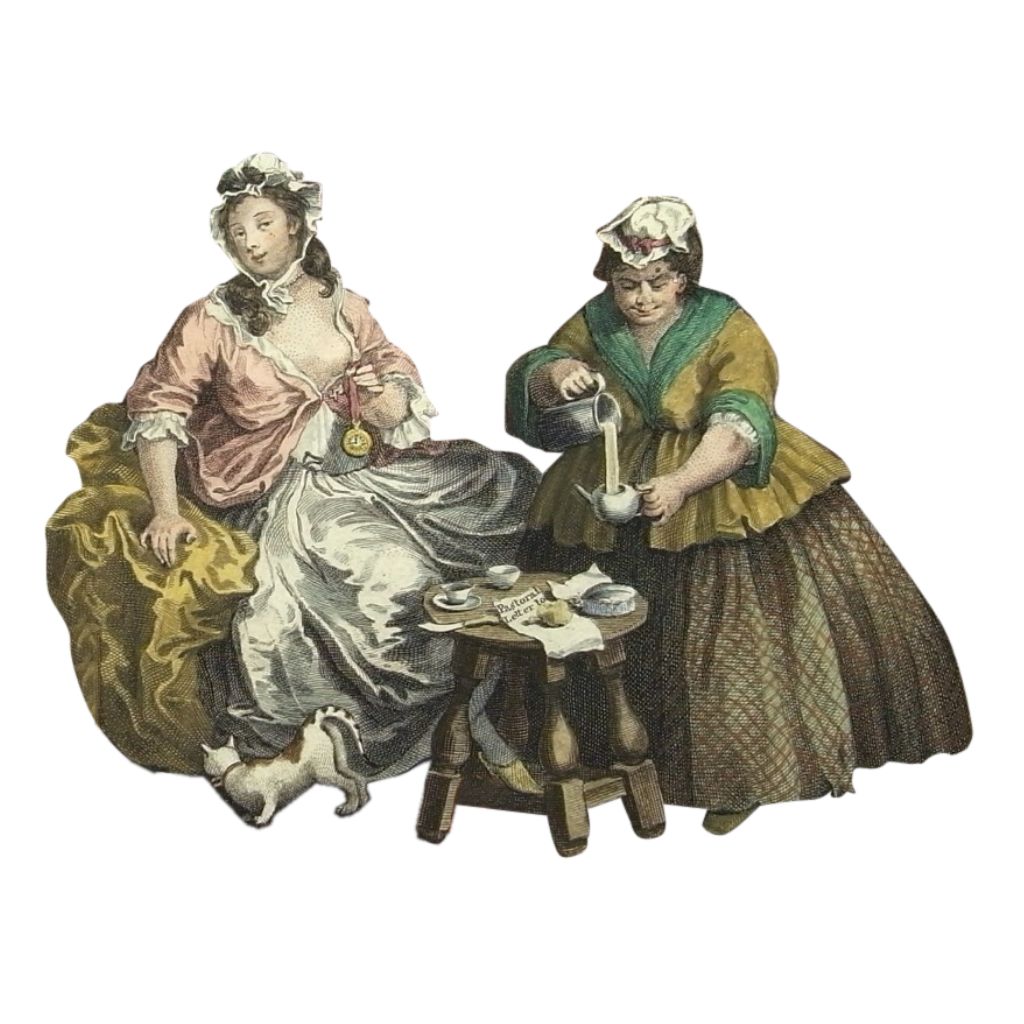
Figure 1 – It all started with ‘Labour and Refreshment’
IMAGE CREDIT: A Harlot’s Progress (1731) by William Hogarth – Attribution 4.0 International (CC BY 4.0)
Hogarth actually started this series of 6 prints by first drawing Scene 3 – the morning cup of tea after a night of ‘sex work’.
He used this image to pun the Masonic wording of ‘Labour to Refreshment’.
This was all explained in the March edition of The Square Magazine.
Hogarth’s Masonic brethren enjoyed this clever riddle and urged him to paint similar scenes.
He was inspired to feature a different part of each Masonic degree in every scene of the progress. Scenes 1 and 2 show the ritual from the 1st and 2nd degrees.
Scene 4 would then be perfect to conceal the Fourth Degree, while the Third and most important degree would be the focus of the final Scene 6.
Within this numeric order, Scene 5 would have been an obvious place to represent what is known as ‘The Five Points of Fellowship’.
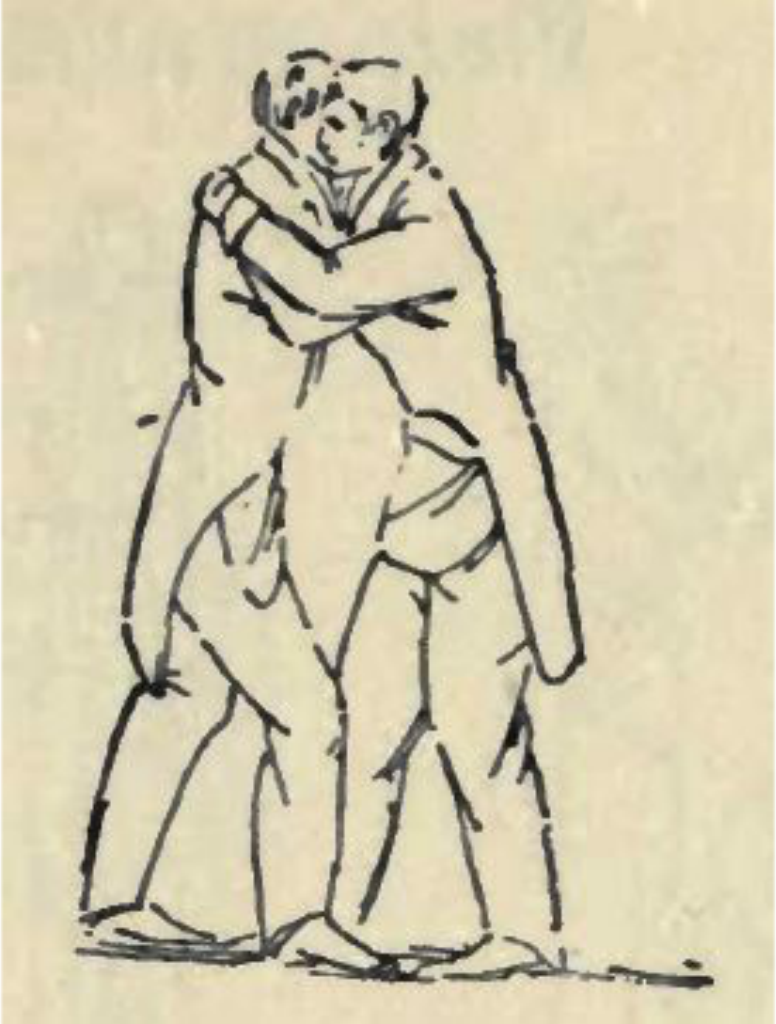
Figure 2 – Illustration from Avery Allyn’s A ritual of freemasonry: illustrated by numerous engravings: with notes and remarks
IMAGE CREDIT: Avery Allyn’s A ritual of freemasonry – Attribution 4.0 International (CC BY 4.0)
The line from Prichard’s expose of 1730 lists these Five Points as: ‘Hand to Hand, Foot to Foot, Knee to Knee, Cheek to Cheek [or mouth to ear] and Hand in Back’.
This position was illustrated in Avery Allyn’s A ritual of freemasonry, (1831).
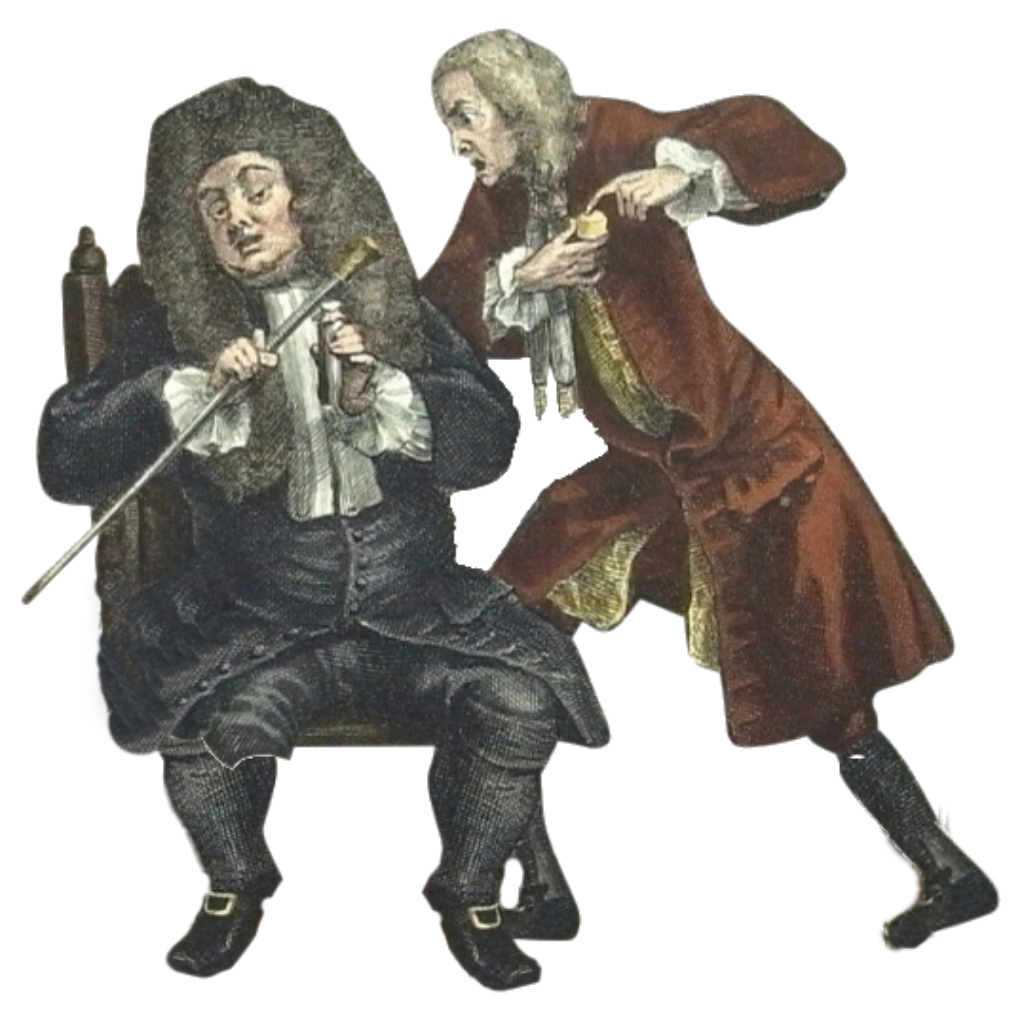
Figure 3 – Doctors fighting over a cure for the dying Harlot.
IMAGE CREDIT: A Harlot’s Progress (1731) by William Hogarth – Attribution 4.0 International (CC BY 4.0)
In order to feature this curious position that is prescribed for this degree, Hogarth introduced a subplot concerning two doctors who argue over the merits of their respective cures.
One holds a box of pills, while the other has prescribed an ointment. These were both common treatments for syphilis.
Their argument over medicines is getting physical. The men’s feet and knees are touching, just as we see in the illustration.
One doctor leans over the other’s shoulder and shouts in his ear (‘mouth to ear’).
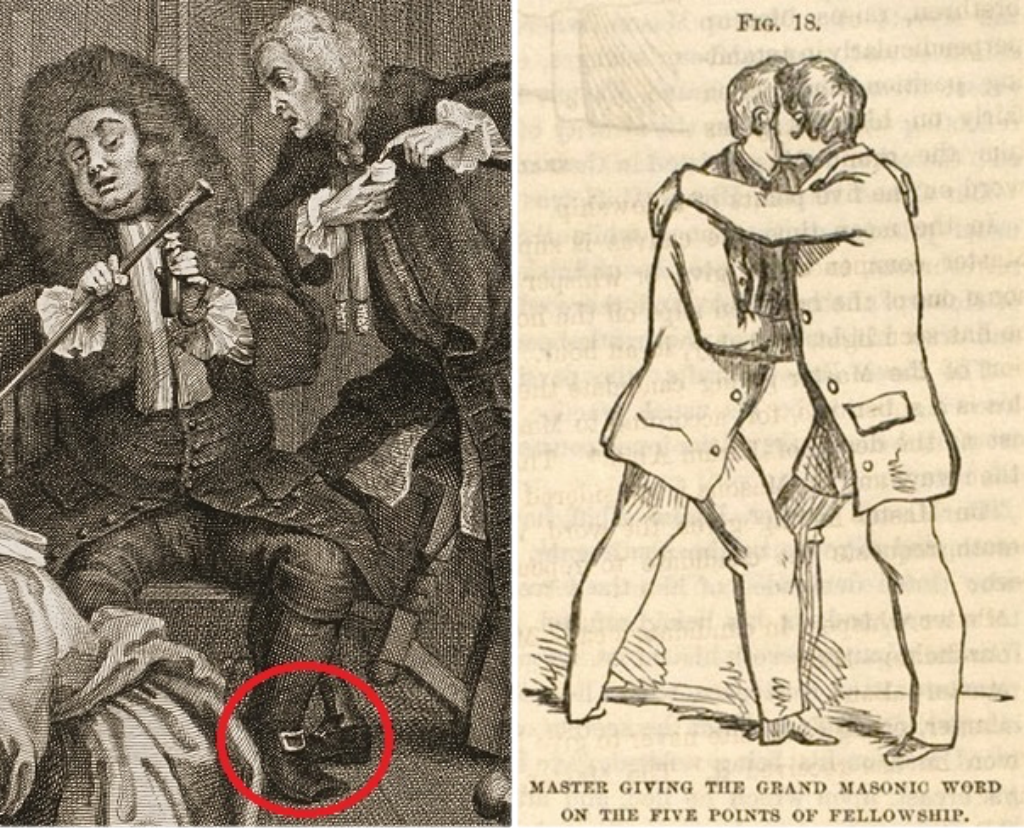
Figure 4 – Doctors compared to illustrations from Duncan’s Masonic Ritual and Monitor: Guide to the Three Symbolic Degrees of the Ancient York Rite and to the Degrees of Mark Master, Past Master, Most Excellent Master, and the Royal Arch, (1866).
IMAGE CREDIT: A Harlot’s Progress (1731) by William Hogarth & illustrations from Duncan’s Masonic Ritual and Monitor – Attribution 4.0 International (CC BY 4.0)
The two doctors (Jean Misaubin and Richard Rock) were both well-known for their treatment of venereal disease.
Hogarth had to stretch his story a little to incorporate these two famous (and expensive) doctors present at a poor Harlot’s bedside.
You will remember how the Harlot was finely dressed in prison was just as unbelievable, but Hogarth feels free to embellish his story in order to incorporate a Masonic detail.
According to an expose of the time, it is in this position that the password is given:
‘Placing himself hand to hand, foot to foot, knee to knee, ear to ear and says [the Master’s Word].’
– Dundee Manuscript of 1727.
The Builder Magazine (1915), tells us that: ‘In Freemasonry King Solomon is said to have established a secret word “MHB” that is a passkey to the third degree.’
The first two letters of this password are clearly written upside down on the ceiling above the two men. It is as if the words are appearing as they are spoken.
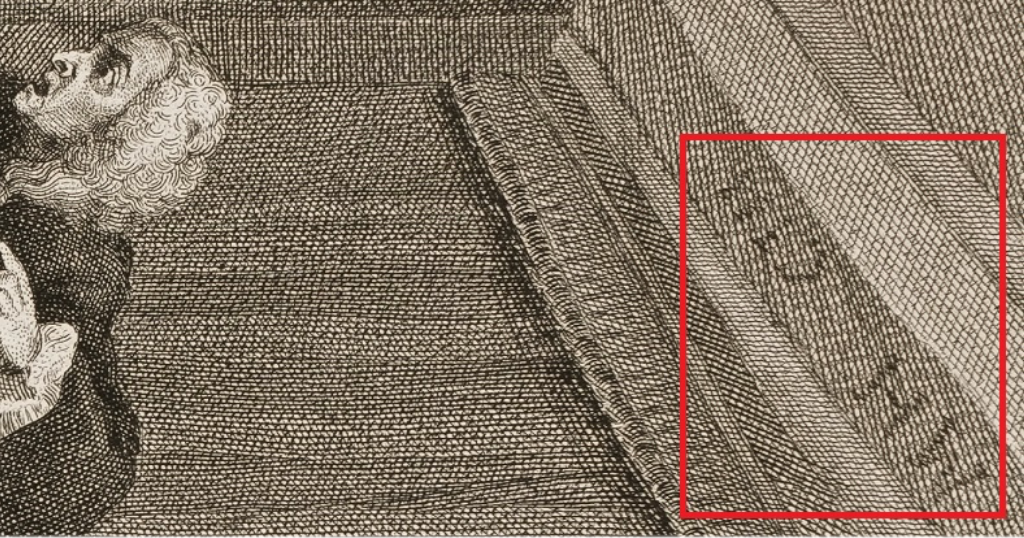
Figure 5 – The letters ‘MU CU’ appear on the rafters above the doctors
IMAGE CREDIT: A Harlot’s Progress (1731) by William Hogarth – Attribution 4.0 International (CC BY 4.0)
Throughout this series the artist provided alternative readings to cover his Masonic tracks. Here, he adds the letters CU.
This looks like someone had graffitied the letters ‘MH CU’ to give the Harlot’s initials followed by the vulgar C-word. ‘Moll Hackabout? She’s a Cu**!’
This element was so random that this hint at a vulgar word was often missed out of subsequent copies of the image.
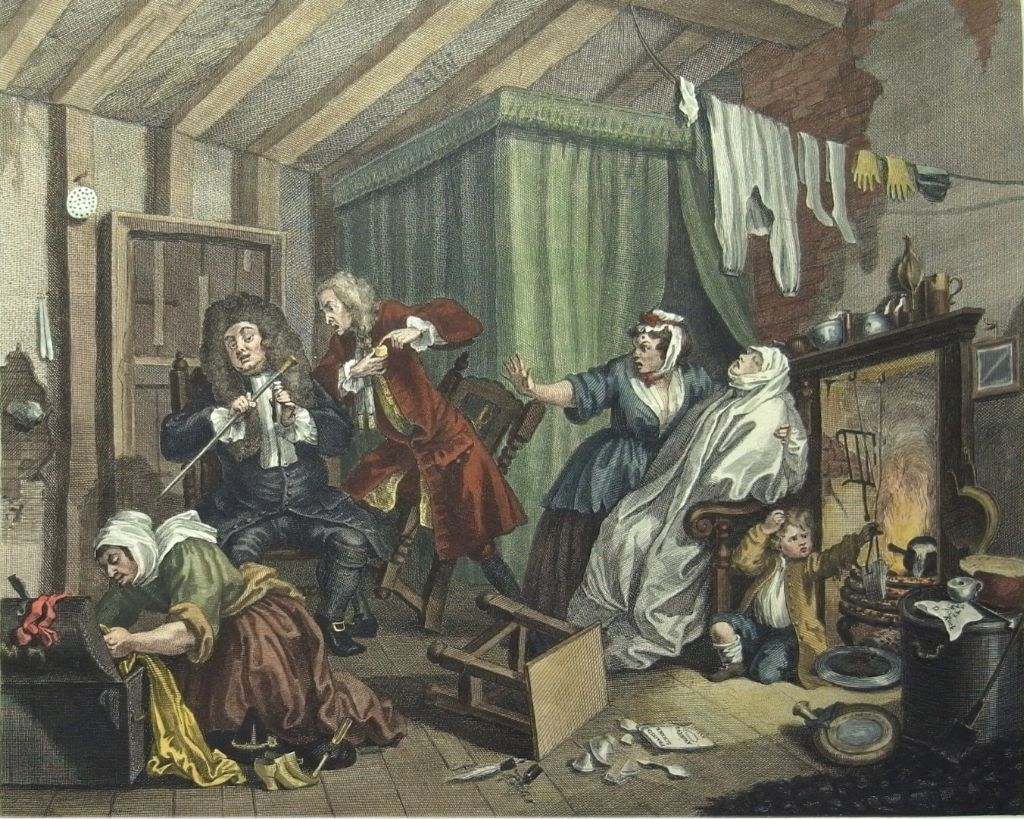
Figure 6 – A Harlot’s Progress Scene 5.
IMAGE CREDIT: A Harlot’s Progress (1731) by William Hogarth – Attribution 4.0 International (CC BY 4.0)
The Harlot was wrapped in a ‘sweating sheet’. Masons would recognise this as another part of the Third Degree.
I only have to include a well-known French print to show a candidate wrapped in the same form. (Assemblée de Francs-Maçons pour la réception des Apprentifs. Léonard Gabanon, 1740.)

Figure 7 – Assemblée de Francs-Maçons pour la réception des Apprentifs. Léonard Gabanon, 1740.
IMAGE CREDIT: Left Hand A Harlot’s Progress (1731) by William Hogarth – Attribution 4.0 International (CC BY 4.0). Right Hand Public domain
The doctors are too busy arguing over the relative merits of their medicines that they fail to notice the demise of their patient.
This is rather dark humour from our master storyteller.
There will be similar humour within the final scene. But first, see if you can find the Masonic signs associated with the Third Degree.
All will be revealed in next month’s installment.
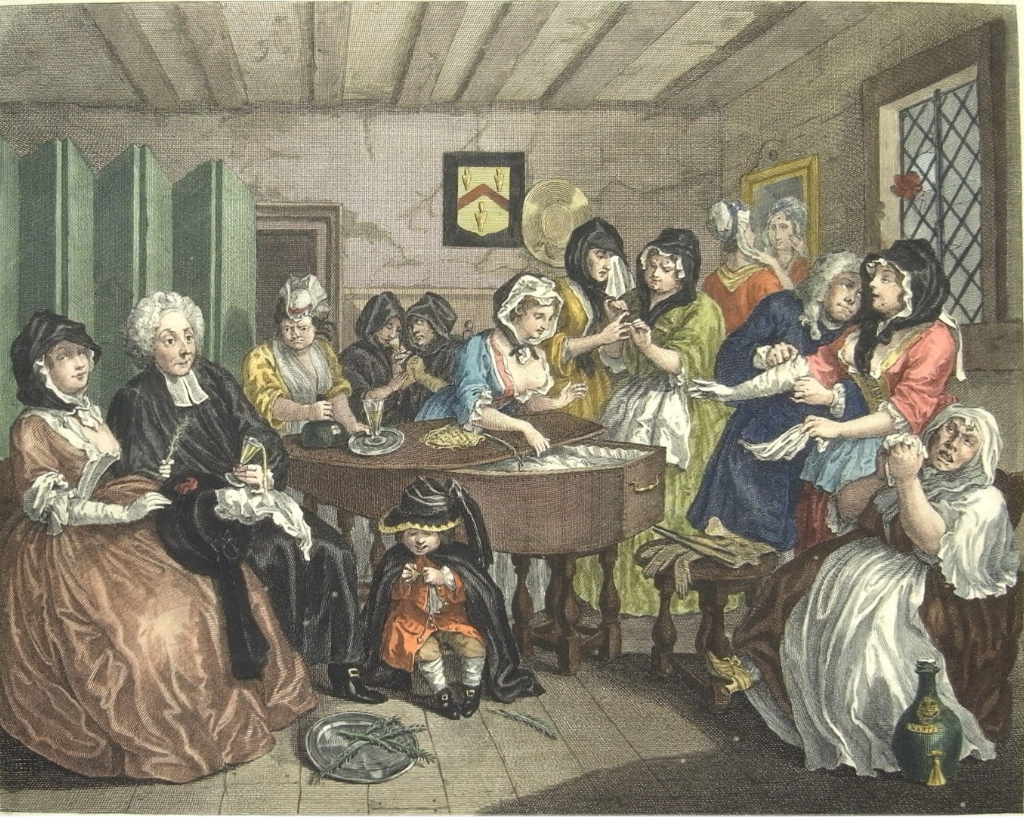
Figure 8 – Final Scene of A Harlot’s Progress
IMAGE CREDIT: A Harlot’s Progress (1731) by William Hogarth – Attribution 4.0 International (CC BY 4.0)
Clue – The Final scene conceals the signs of the Third degree, along with a hidden caricature of the Third Grand Master, and a rather vulgar joke.
Artist: William Hogarth (1697-1764)
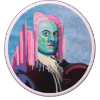
William Hogarth was made a Mason at the Hand and Apple Tree Lodge in Little Queen Street, Holborn, London c1725-28.
He later joined the Bear and Harrow in Butcher Row, known later as the ‘Corner Stone’ Lodge 4, and then Grand Steward’s Lodge. He designed a jewel known as ‘Hogarth’s Jewel’, it remained in continual use into the nineteenth century.
Hogarth was a prolific English painter whose scenes often demonstrated a satirical depiction of 18th century life.
He was responsible for the Copyright Act passed by Parliament in 1735 also known as the Hogarth Act.
Artwork: Tim Fowler
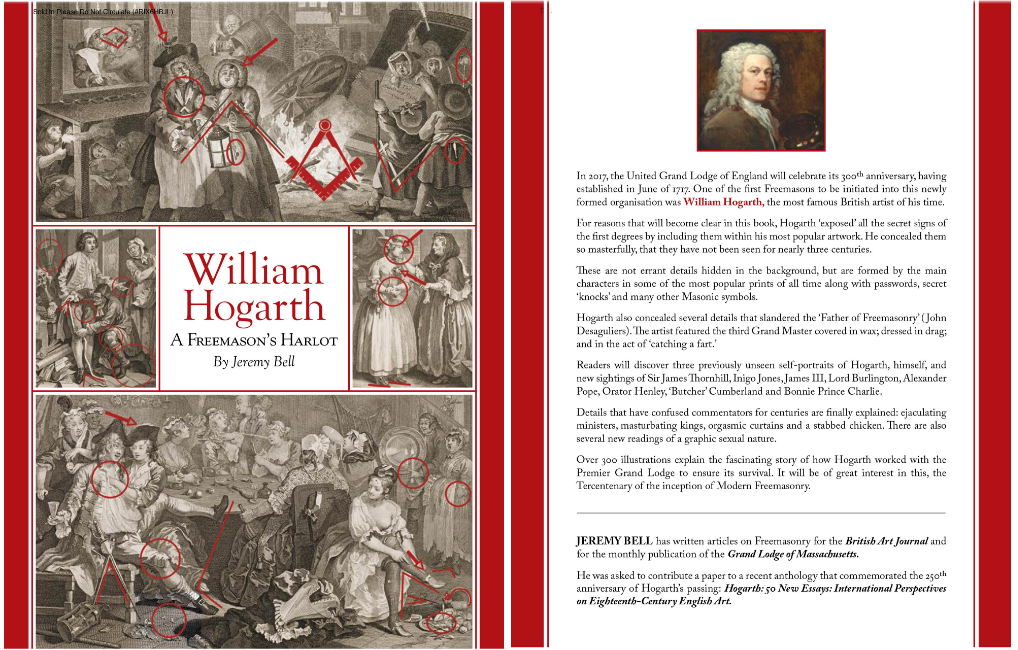
Many more details from the other scenes are explained in my book William Hogarth - A Freemason’s Harlot which is available from my website www.brotherhogarth.com.
Email me at Brotherhogarth@gmail.com. I can show you how many of Hogarth’s other works were Masonically themed.
Recent Articles: by Brother Hogarth
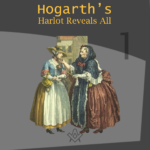 Hogarth’s Harlot Reveals All - Part 1 A new series looking at the hidden Masonic symbolism within Brother Hogarth's works - what can you find? |
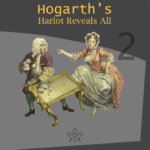 Hogarth’s Harlot Reveals All - Part 2 The second instalment in the series looking at the hidden Masonic symbolism within Brother Hogarth's works - what can you find? |
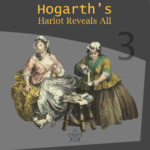 Hogarth’s Harlot Reveals All - Part 3 Brother Hogarth gives us another bawdy glimpse into the salacious world of the 'Harlot's Progress', and the tantalising Masonic symbolism hidden within! Can you spot the clues? |
 Hogarth’s Harlot Reveals All - Part 4 This month we find her in prison doing forced labour. So why, you may ask, is she dressed so finely? This sudden change of costume confused many commentators over the centuries. |
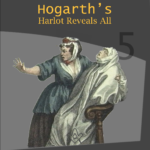 Hogarth’s Harlot Reveals All - Part 5 In last month’s instalment, our Harlot is found in prison doing forced labour. In this instalment the Harlot dies! |
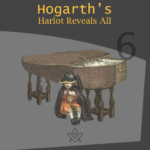 Hogarth’s Harlot Reveals All - Part 6 With our protagonist (the Harlot) lying in her casket, what next for the Widow's Son? |
 Hogarth's Harlot Reveals All - Part 6.2 A naughty clergyman, the virgin, and 'Father Time' - what can Hogarth reveal now?! |
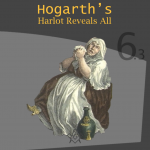 Hogarth's Harlot Reveals All - Part 6.3 Who are the famous men featured in the scene? Hogarth reveals all! |
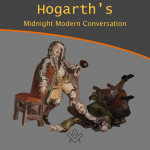 Hogarth's Midnight Modern Conversation Brother Hogarth is back with a look at another work of art with Masonic symbolism 'hidden in plain view' - what is occurring within the Midnight Modern Conversation? |
 Hogarth discreetly embeds more masonic signs and symbols in his paintings , never forgetting, everything he included in his scenes had meaning and is there for a reason. |
 Hogarth discreetly embeds more masonic signs and symbols in A Rake’s Progress, never forgetting, everything he included in his scenes had meaning and is there for a reason. |
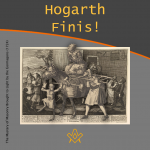 For twelve months Hogarth and his Harlot have revealed all, and the Rake has exposed himself. In this, the last part of the series (for now), we get a final glimpse at a few more of Hogarth's Masonic 'reveals'. |
masonic knowledge
to be a better citizen of the world
share the square with two brothers

click image to open email app on mobile device


